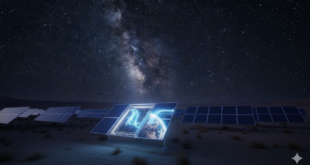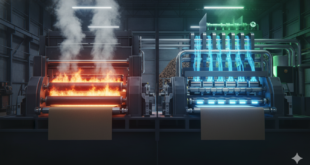Hydrogen-Ready Power Plants: Powering the Net Zero Transition Today
Discover how hydrogen-ready power plants are providing flexible, sustainable solutions to bridge today’s energy systems with a carbon-free future.
Introduction
As the global community accelerates toward net zero emissions, renewable energy sources such as wind and solar have become indispensable in reducing carbon footprints. Yet, their intermittent nature poses significant challenges for grid stability, necessitating flexible power generation solutions. Hydrogen-ready power plants are emerging as a critical bridge between today’s natural gas-based systems and the hydrogen-fueled, carbon-free grids of the future. These plants ensure immediate grid reliability while also offering a seamless pathway to switch to sustainable, zero-carbon fuels as green hydrogen production scales up and becomes economically viable.
The Role of Hydrogen in the Energy Transition
The International Energy Agency’s (IEA) World Energy Outlook 2023 emphasizes hydrogen as one of the cornerstones of the future energy system. Hydrogen is no longer just a distant possibility—it is already seen as essential for achieving global net zero emissions by 2050. According to the report, power generation alone will need to consume around 17 million tonnes of hydrogen by 2030, skyrocketing to 51 million tonnes by 2050. Why is this so important? Because hydrogen acts as a versatile energy carrier, bridging gaps that renewable electricity alone cannot fill. As solar and wind capacity rapidly expand—expected to double by 2030—there will be times when clean electricity production exceeds demand. Rather than wasting this surplus energy, it can be used to power electrolyzers that split water into hydrogen and oxygen, storing energy in the form of hydrogen.
However, simply expanding renewables isn’t enough to meet climate goals. The sun doesn’t always shine, and the wind doesn’t always blow. Without sufficient storage or backup, renewable energy alone cannot provide stable, continuous power. This is where hydrogen plays a critical role—not just as a clean fuel, but as a flexible energy storage solution that can be dispatched when needed, helping to smooth out the supply-demand curve. It enables power plants to adapt in real time to grid fluctuations, creating a more resilient and sustainable energy system.
The Need for Flexible Power Generation
We’re seeing a rapid surge in renewable energy installations around the world—solar farms, wind parks, and hydroelectric stations are multiplying. This is fantastic for reducing emissions, but it comes with a challenge: renewables are inherently intermittent. For example, cloud cover can suddenly reduce solar output, or a calm day may leave wind turbines idle. To keep the lights on and industries running, energy systems need a way to handle these unpredictable fluctuations.
This is where hydrogen-ready power plants come into play. These facilities are designed to provide flexible power generation: they can run today on natural gas and smoothly switch to hydrogen when the supply becomes more widely available. This flexibility is vital because it allows power grids to stabilize during low renewable output, avoiding blackouts or over-reliance on fossil fuels. Rather than building entirely new hydrogen infrastructure from scratch, hydrogen-ready plants provide a cost-effective bridge solution—helping the energy system transition smoothly over time.
Importantly, this dual-fuel strategy allows power plants to adapt as market demands and policies evolve. In the early stages, blending hydrogen with natural gas helps reduce emissions, while later, a full switch to hydrogen eliminates carbon emissions altogether. This approach also addresses supply chain issues by not forcing an abrupt technological leap but enabling gradual adaptation as hydrogen becomes more available and affordable.
What Are Hydrogen-Ready Power Plants?
So, what makes a power plant “hydrogen-ready”? At their core, these plants are designed for dual fuel capability. Today, they operate primarily on natural gas, occasionally running blends that include up to 25% hydrogen by volume. But their real innovation lies in the forward-looking design that enables them to switch to 100% hydrogen operation in the near future.
Why is this important? Because hydrogen behaves very differently from natural gas. For instance, hydrogen ignites faster and burns hotter than natural gas. To accommodate these differences, hydrogen-ready plants are equipped with advanced fuel delivery systems and modified combustion chambers. These components ensure that hydrogen burns efficiently and safely, without destabilizing the system. The plants also feature digital control systems that precisely adjust combustion dynamics in real time, adapting automatically to changes in fuel mix and demand.
Material science is a key enabler of this transition. Hydrogen can cause embrittlement—weakening metal components over time. To prevent this, engineers use specially treated alloys and coatings that resist corrosion and embrittlement, guaranteeing long-term safety and performance. Altogether, hydrogen-ready plants are built to deliver reliable power now and remain fully adaptable as the hydrogen economy grows.
Key Technologies and Their Differentiators
Hydrogen-ready power plants are packed with cutting-edge technologies that set them apart from conventional facilities. First and foremost is their dual-fuel capability—a design choice that allows them to switch seamlessly between natural gas and hydrogen as the market develops. Rather than being locked into one fuel type, these plants future-proof energy infrastructure investments.
Their specialized fuel delivery systems ensure hydrogen is injected and mixed precisely, preventing flame instability or combustion inefficiency. The modified combustion chambers are engineered to handle hydrogen’s high flame speed and lower ignition energy, critical factors for safe operation.
Advanced digital control systems play a huge role by enabling dynamic grid synchronization and flexible load management. This allows power plants to ramp output up or down in seconds to balance the grid as renewable energy fluctuates, unlike traditional plants that struggle with long ramp-up times. Thanks to real-time monitoring and automated adjustments, these systems help avoid blackouts and overproduction, increasing grid reliability.
By integrating all of these technologies, hydrogen-ready power plants are able to meet today’s power generation needs while setting the foundation for a carbon-free future.
Real-World Examples and Industry Initiatives
Several industry pioneers are already proving that hydrogen-ready solutions are not just theory—they’re practical and scalable today.
Wärtsilä is leading the charge with the world’s first large-scale, 100% hydrogen-ready power plant. Based on their highly efficient Wärtsilä 31 engine platform, this power plant is designed to transition from natural gas to hydrogen without costly overhauls. The engine platform can synchronize with the grid in as little as 30 seconds, making it ideal for balancing the intermittency of renewable energy. It offers exceptional load-following abilities and ensures energy security through its ability to run on a wide range of fuels.
Fun fact: The Wärtsilä 31 holds the Guinness World Record for the most efficient 4-stroke marine engine in its class, generating more power per cylinder than comparable engines. It’s available in configurations from 4.6 MW to 10.4 MW, depending on the number of cylinders and speed.
Meanwhile, GE Vernova is advancing hydrogen-capable aeroderivative gas turbines—engines originally designed for jet aircraft now adapted for power generation. These turbines operate efficiently today on natural gas but are already designed for a future switch to hydrogen, giving power operators flexibility to adapt as hydrogen becomes widely available.
Other projects across Europe and North America are retrofitting existing power plants to incorporate hydrogen conversion capabilities, reducing the need for entirely new facilities. These efforts highlight the industry’s growing commitment to integrating flexible, future-proof energy solutions that enable a gradual but irreversible shift toward a sustainable hydrogen economy.
Conclusion
Hydrogen-ready power plants represent a transformative leap in the journey toward net zero emissions. By combining the operational flexibility of natural gas with the potential to transition to 100% hydrogen, these plants offer a robust solution for balancing the intermittent nature of renewable energy sources. Their advanced technologies—from specialized fuel systems and combustion chambers to sophisticated control systems and corrosion-resistant materials—ensure both immediate reliability and long-term sustainability. As industry leaders like Wärtsilä and GE Vernova drive these innovations, and retrofitting projects continue to emerge globally, hydrogen-ready power plants are poised to become a cornerstone of the future energy landscape. This evolution not only secures the grid today but also charts a clear pathway toward a fully decarbonized, resilient, and sustainable energy future for generations to come.
 International Defense Security & Technology Your trusted Source for News, Research and Analysis
International Defense Security & Technology Your trusted Source for News, Research and Analysis




